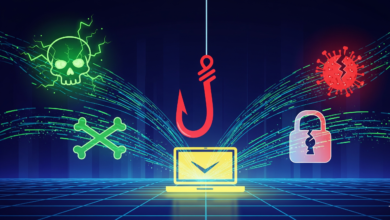Understanding DDoS Attacks and How to Prevent Them

What Are DDoS Attacks?
Distributed Denial of Service (DDoS) attacks are malicious attempts to disrupt the normal functioning of targeted servers, services, or networks by overwhelming them with a flood of internet traffic. This cyber threat exploits the resources of a network, rendering it unable to respond to legitimate requests. DDoS attacks are characterized by their distributed nature, where multiple compromised systems simultaneously target a single victim, which can be an individual, business, or organization.
There are several types of DDoS attacks, including volumetric attacks, protocol attacks, and application-layer attacks. Volumetric attacks involve overwhelming the bandwidth of the target with excessive data, using a high volume of requests to saturate and exhaust server resources. Common examples include UDP Flood and ICMP Flood attacks. Protocol attacks, on the other hand, aim to exploit weaknesses in layer 3 and layer 4 protocols, consuming critical server resources and system memory. SYN Flood and Ping of Death are notable examples of protocol attacks.
Application-layer attacks are more sophisticated, targeting specific applications or services on a server. By focusing on the latest vulnerabilities, these attacks can significantly disrupt business operations. An example is the HTTP Flood attack, which inundates a web server with requests, thereby slowing down or crashing the application. Real-world examples of DDoS attacks include the 2016 attack on Dyn, which disrupted major websites such as Twitter and Netflix, demonstrating the potential scale and impact of these incidents.
The motivations behind DDoS attacks can be varied, including hacktivism, where individuals protest or draw attention to a cause; extortion, in which attackers demand ransom to stop the assault; and competition, where rival businesses seek to harm each other’s operations. Understanding these motivations and attack types is crucial for safeguarding against the growing prevalence of DDoS threats in today’s digital landscape.
Recognizing the Signs of a DDoS Attack
Distributed Denial of Service (DDoS) attacks pose significant threats to organizations by overwhelming their resources and disrupting services. Recognizing the signs of a DDoS attack is essential for timely mitigation and safeguarding networks. One primary indicator of such an attack is a sudden spike in traffic, which can overwhelm servers and lead to service interruptions. This surge is not a result of increased legitimate user engagement but rather a deliberate action by attackers to exhaust system capabilities.
Another critical symptom of a DDoS attack is slow website performance. Users might experience delays when accessing content, rendering pages slowly or timing out entirely. This degradation of service can lead to frustration for users and can harm an organization’s reputation. Additionally, frequent service outages can indicate a DDoS attack, as continuous attempts to access resources may lead to server or network failure.
To effectively monitor and identify these signs, organizations are encouraged to use various diagnostic and monitoring tools. Solutions such as intrusion detection systems (IDS), and network performance monitors can provide real-time updates and alerts when suspicious activity is detected. These tools not only help in identifying unusual traffic patterns but also contribute to a proactive defense against potential attacks.
Understanding normal traffic patterns is equally critical in differentiating between legitimate spikes and malicious attempts to disrupt services. By establishing a baseline of regular network activity, organizations can more accurately identify anomalies. Thus, regular analysis of network traffic and implementing alert systems can go a long way in preparing for and defending against DDoS attacks, ensuring that organizations maintain continuity and reliability for their users.
Preventative Measures Against DDoS Attacks
To combat the rising threat of DDoS attacks, organizations must adopt a multi-faceted strategy that incorporates various layers of defense. One crucial step is the implementation of robust firewalls that can filter out malicious traffic before it reaches critical systems. Firewalls serve as a first line of defense, allowing legitimate traffic while blocking suspicious requests, thereby significantly lowering the risk of a successful attack. Moreover, configuring these firewalls to recognize and mitigate traffic patterns indicative of DDoS attacks is essential for enhanced security.
Rate limiting is another effective tool in the fight against DDoS attacks. By restricting the number of requests a user can make in a given timeframe, organizations can reduce the impact of overwhelming traffic surges. This technique not only safeguards resources but also helps maintain service availability for legitimate users during an attack. Additionally, traffic analysis plays a crucial role in identifying unusual patterns that could signify an impending DDoS attack. Continuous monitoring allows for proactive adjustments to security measures, ensuring that systems remain resilient against evolving threats.
Utilizing Content Delivery Networks (CDNs) can also bolster protection against DDoS attacks. CDNs distribute web traffic across multiple servers, reducing the load on any single point of failure. In doing so, they not only enhance performance but also provide an extra layer of safety by absorbing potential attack traffic. Similarly, dedicated DDoS mitigation services offer specialized tools and expertise designed explicitly to address such threats, providing organizations with tailored solutions to counteract and neutralize attacks efficiently.
Finally, it is vital for businesses to establish a comprehensive response plan in advance. This strategy should outline specific actions to take during a DDoS incident, ensuring that teams can act swiftly to minimize disruption and damage. Being prepared not only facilitates a quicker response but also instills confidence in both employees and customers, affirming that the organization takes cybersecurity seriously. Protecting against DDoS attacks through these diverse preventative measures can substantially enhance an organization’s resilience in the face of digital threats.
Response Strategies for Mitigating DDoS Attacks
When faced with a Distributed Denial of Service (DDoS) attack, organizations must adopt effective response strategies to minimize impacts on their operations and maintain service continuity. One of the first immediate steps to take is to alert internet service providers (ISPs). ISPs often have mechanisms in place to help mitigate such attacks, and their quick involvement can be crucial in reducing the volume of malicious traffic directed at an organization’s network.
Additionally, activating pre-established response plans is essential. Organizations should have a documented DDoS response plan developed before an attack occurs, outlining roles and responsibilities, as well as action steps to be taken. This proactive approach enables teams to quickly mobilize, streamlining their response and reducing the time it takes to restore normal operations.
Furthermore, engaging external mitigation resources can be an effective strategy to counteract DDoS attacks. Many third-party service providers specialize in DDoS protection and can effectively absorb and filter out malicious traffic, allowing legitimate requests to reach the organization’s servers. Utilizing these services can provide an additional layer of security and lessen the burden on internal resources during an attack.
Equally important is communication throughout the duration of the attack. Internally, stakeholders must be kept informed about the status of the attack, what actions are being taken, and any potential implications for their areas of responsibility. Externally, maintaining open lines of communication with customers is vital to uphold trust. Regular updates can provide reassurance that the organization is taking the necessary steps to manage the situation and protect their services.
Implementing these response strategies will create a framework that not only addresses the immediate effects of DDoS attacks but also reinforces the organization’s resilience and reputation in the long run.






















